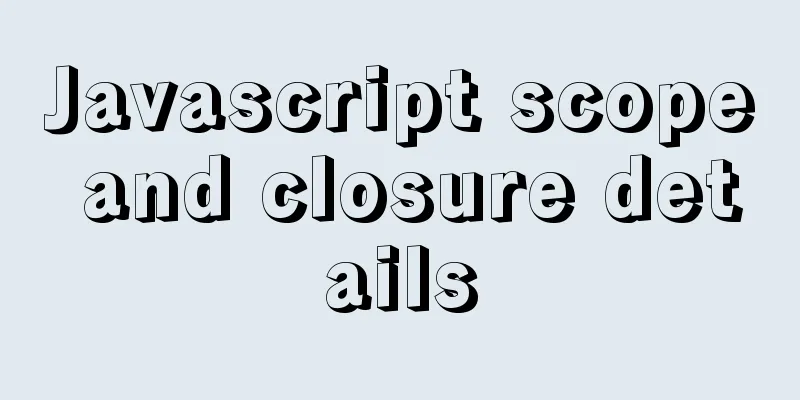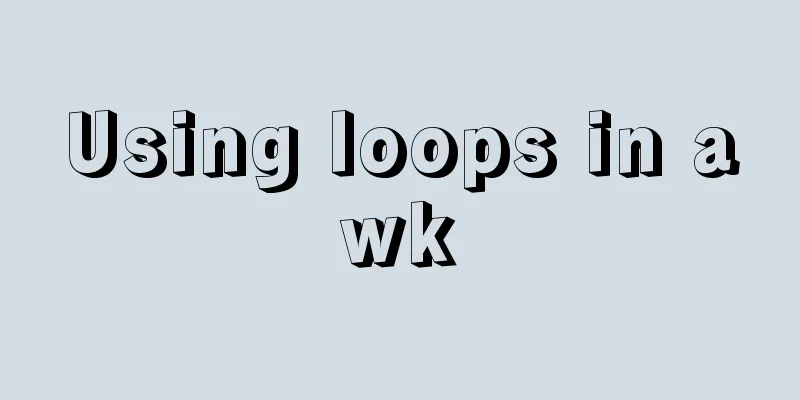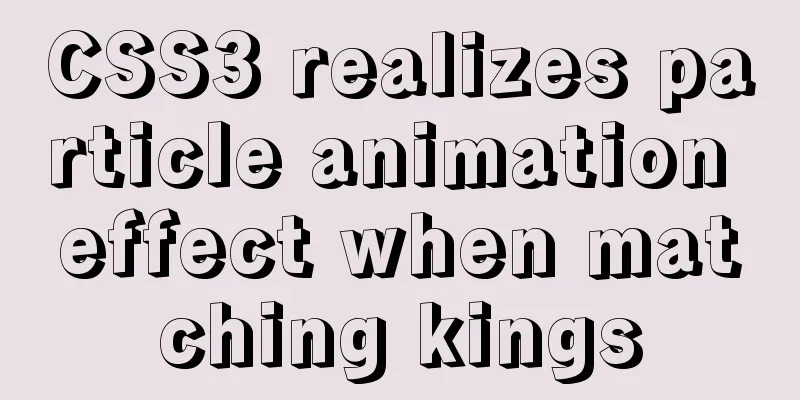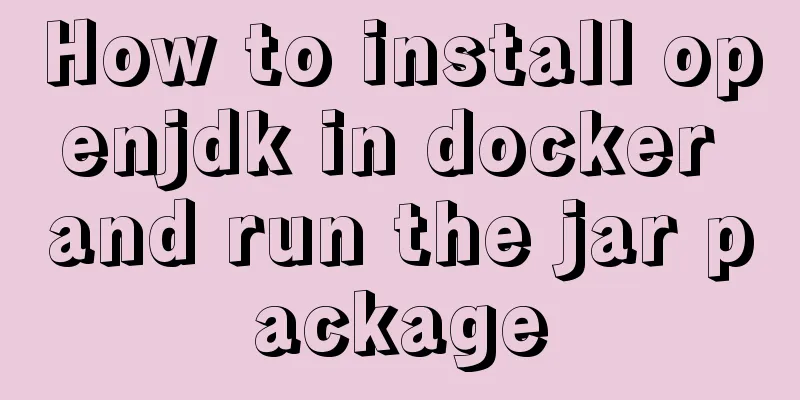Javascript scope and closure details

1. ScopeSimply put, scope refers to the area in a program where variables are defined, which determines the access rights of the currently executed code to the variables. In ES5, there are generally only two scope types:
After talking about the concept, let's look at the following code:
var a = 100
function test(){
var b = a * 2
var a = 200
var c = a/2
console.log(b)
console.log(c)
}
test() // What will be printed here?
Analysis:
So it will print NaN, 100 In ES6, a new block scope is added In simple terms, the area within the curly braces
// ES5
if(true) {
var name = 'Nanjiu'
}
console.log(name) // Nanjiu // ES6
if(true) {
let age = 18
}
console.log(age) // This will report an error2. Scope Chain When accessing a variable inside the executable code, it will first check whether the variable exists in the current scope. If it does, it will return immediately. If not, it will search in the parent scope... until it finds the global scope. We call this scope nesting mechanism 3. Lexical Scope
The so-called lexical scope is determined by where you write the variables and scopes when you write the code. That is, the lexical scope is a static scope, which is determined when you write the code. The scope of a function is determined by where it is declared, not where it is actually called. MDN defines closures as follows: A function is bundled with a reference to its surroundings (lexical environment) (or the function is surrounded by references). Such a combination is called In other words, closures allow you to access the scope of an outer function from within an inner function. In We can conclude that:
Let's look at the code first:
var name = 'Front-end Nanjiu'
function say() {
console.log(name)
}
say()
Analysis: The There is a sentence in the book "Javascript Definitive Guide": Strictly speaking, all But this is just a theoretical closure, which is different from what we usually use. The example above is just a simple closure. ECMAScript defines closures as follows:
Let's look at another piece of code from the JavaScript Definitive Guide:
let scope = 'global scope'
function checkscope(){
let scope = 'local scope'
function f(){
return scope
}
return f
}
let s = checkscope()
s() // What does this return?
Many students may think it is
Basic rules of scope: 5. Application of closure
6. The flaws of closures
7. Frequently asked closure interview questions
var arr = []
for(var i=0;i<3;i++){
arr[i] = function(){
console.log(i)
}
}
arr[0]() // 3
arr[1]() // 3
arr[2]() // 3
// Here, i has become 3 during execution
// Solve using closure var arr = []
for(var i=0;i<3;i++){
arr[i] = (function(i){
return function(){
console.log(i)
}
})(i)
}
arr[0]() // 0
arr[1]() // 1
arr[2]() // 2
This is the end of this article about Javascript scope and closure details. For more information about Javascript scope and closure, please search for previous articles on 123WORDPRESS.COM or continue to browse the following related articles. I hope you will support 123WORDPRESS.COM in the future! You may also be interested in:
|
<<: Detailed explanation of CSS counter related attributes learning
>>: Docker stop stops/remove deletes all containers
Recommend
Nginx installation and environment configuration under Windows (running nginx as a service)
The first and most important step is how to insta...
Global call implementation of Vue2.x Picker on mobile terminal
Table of contents What is the Picker component Pr...
How to bypass unknown field names in MySQL
Preface This article introduces the fifth questio...
Detailed examples of Docker-compose networks
Today I experimented with the network settings un...
A brief analysis of the game kimono memo problem
Today, after the game was restarted, I found that...
Example method to view the IP address connected to MySQL
Specific method: First open the command prompt; T...
Common array operations in JavaScript
Table of contents 1. concat() 2. join() 3. push()...
Nginx installation detailed tutorial
1. Brief Introduction of Nginx Nginx is a free, o...
How to implement draggable components in Vue
This article shares with you how to implement dra...
Two ways to export csv in win10 mysql
There are two ways to export csv in win10. The fi...
How to view the running time of MySQL statements through Query Profiler
The previous article introduced two methods to ch...
Detailed explanation of the usage of setUp and reactive functions in vue3
1. When to execute setUp We all know that vue3 ca...
Complete guide to using iframe without borders or borders (practical experience summary)
<iframe src=”you page's url” width=”100″ he...
display:grid in CSS3, an introduction to grid layout
1. Grid layout (grid): It divides the web page in...
JavaScript implements mouse drag to adjust div size
This article shares the specific code of JavaScri...









